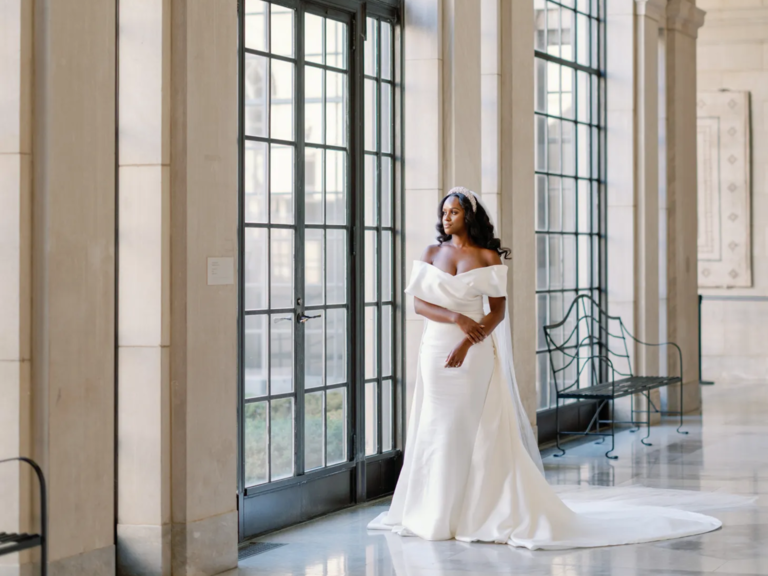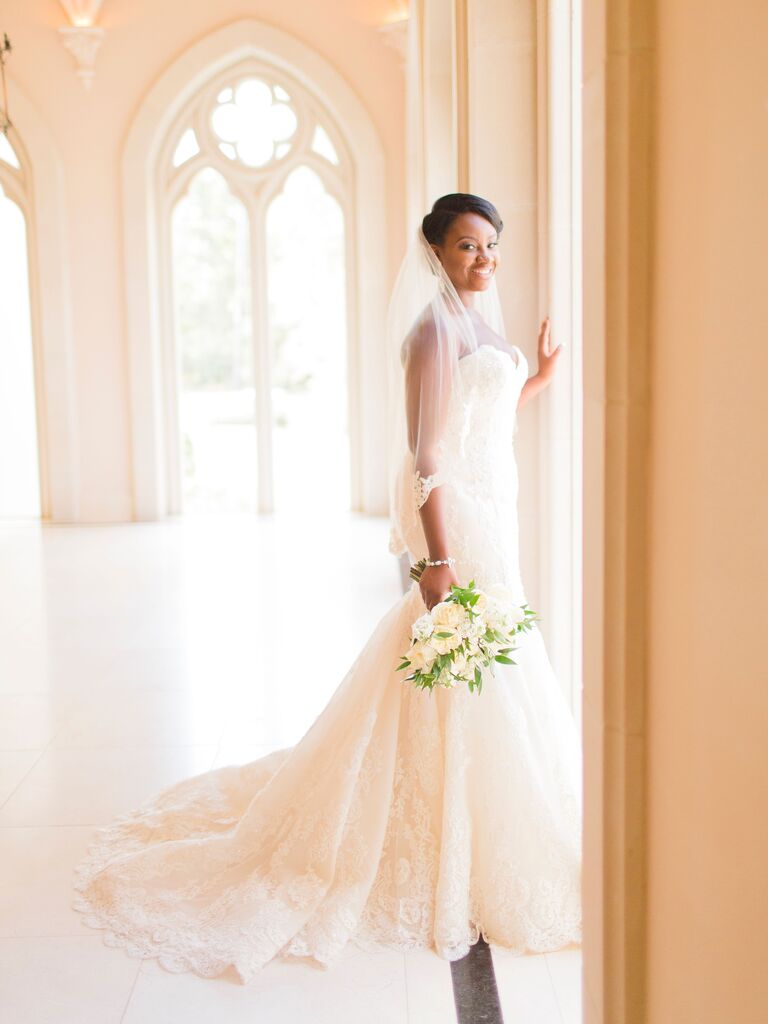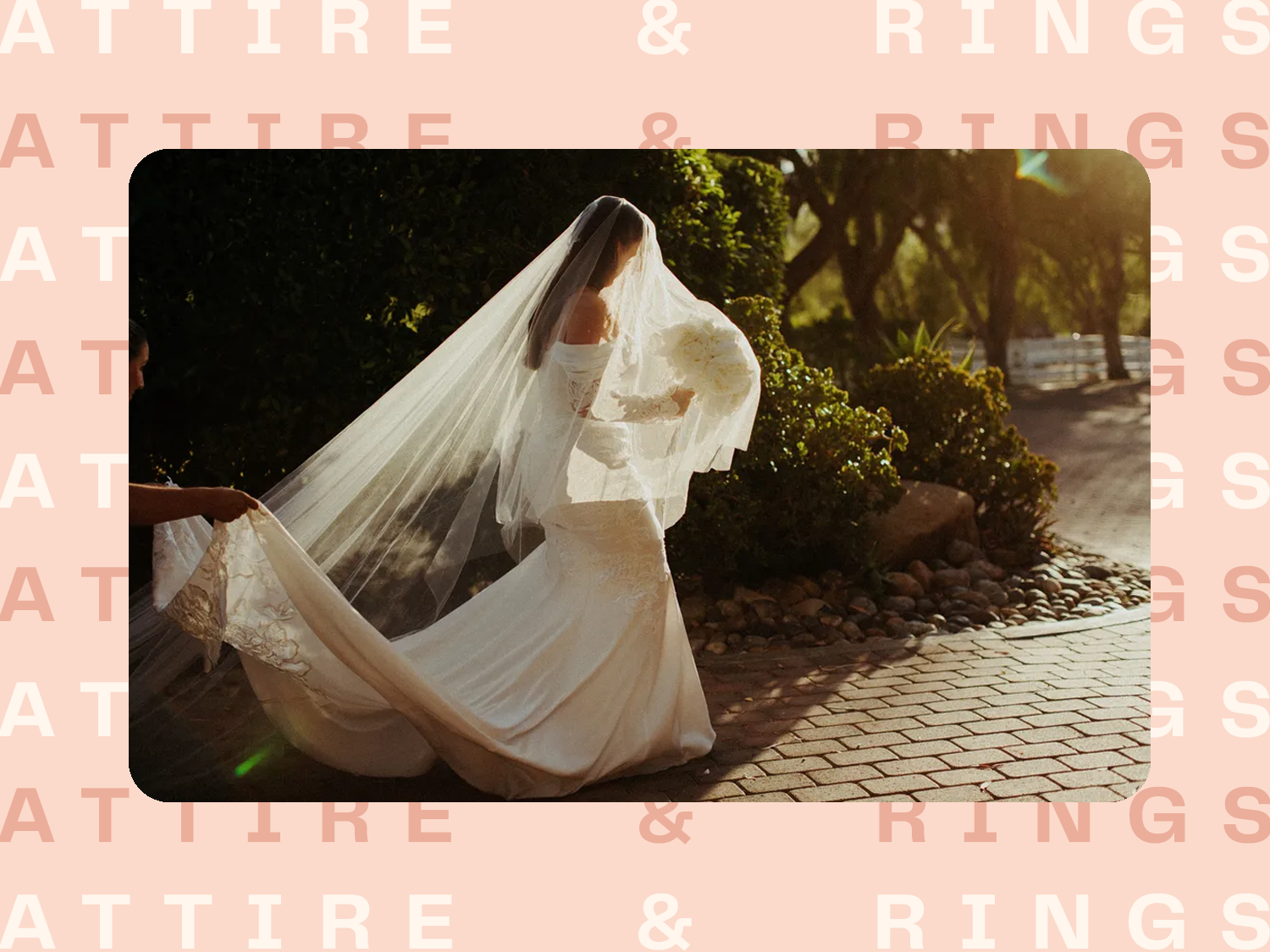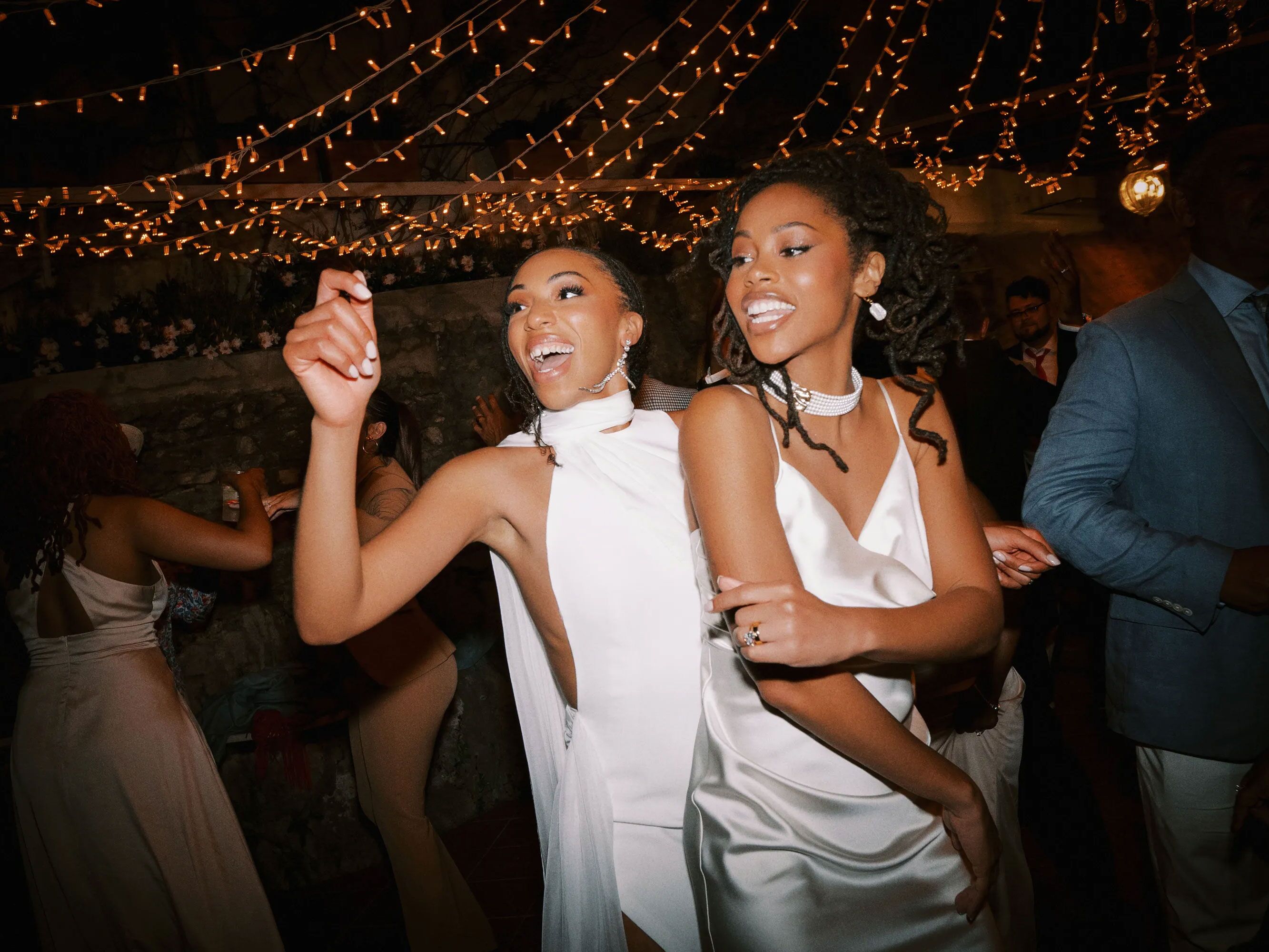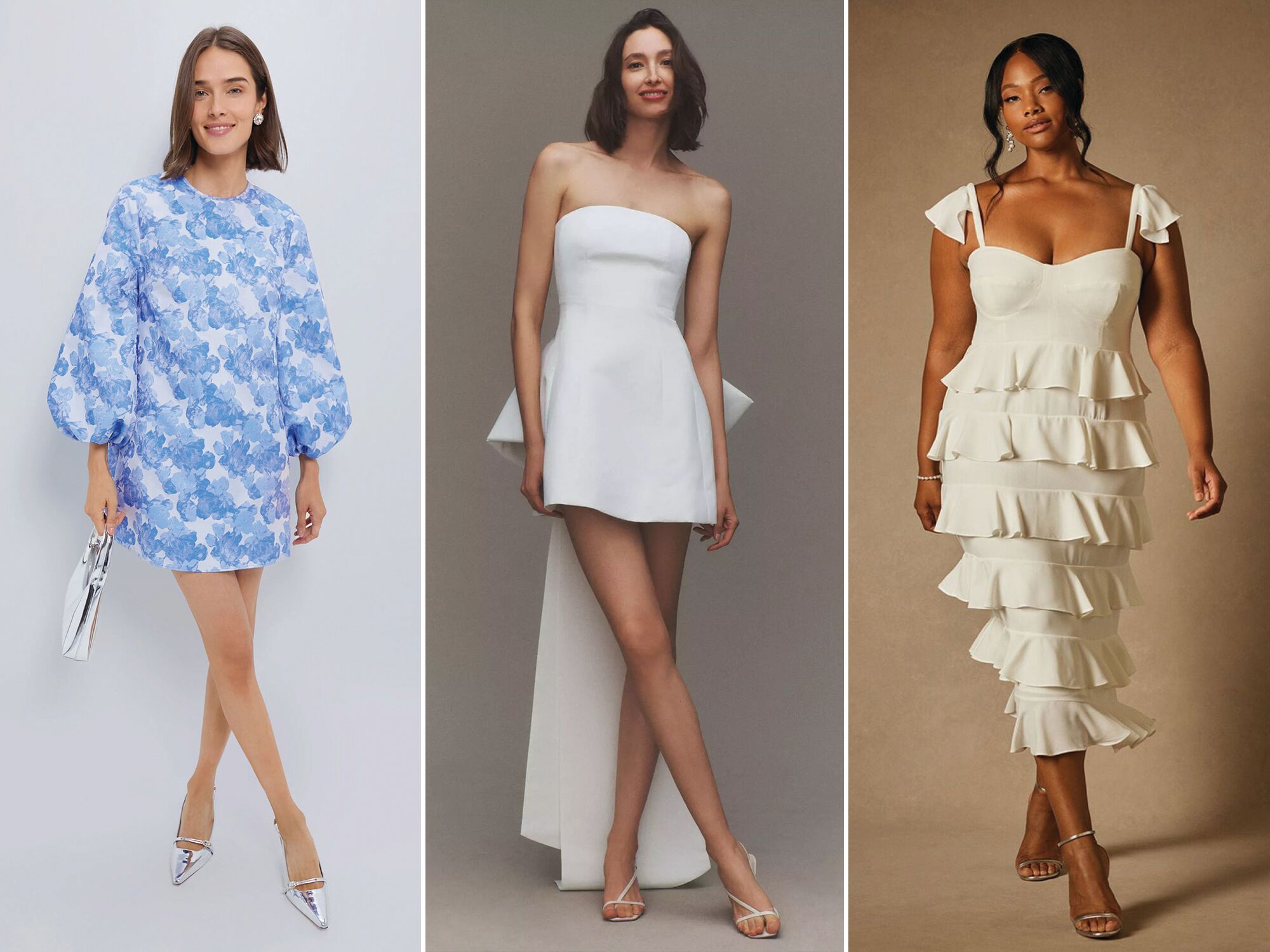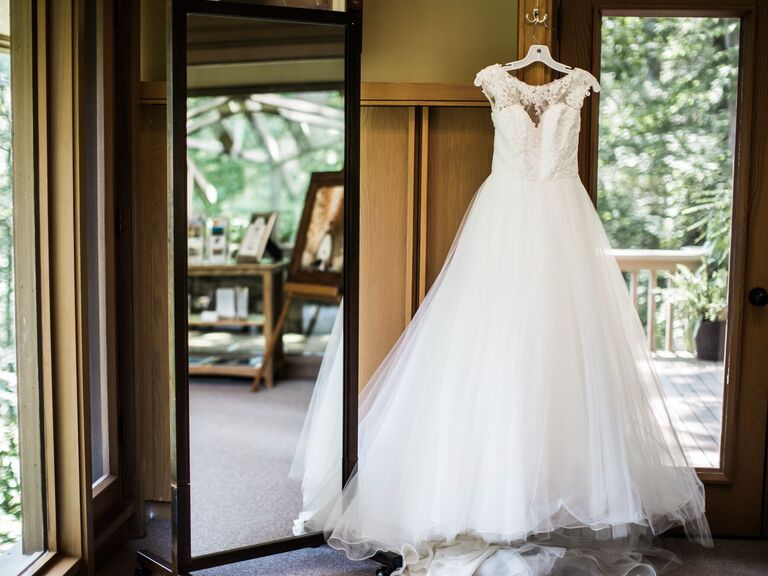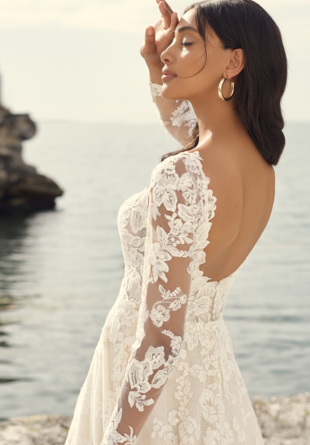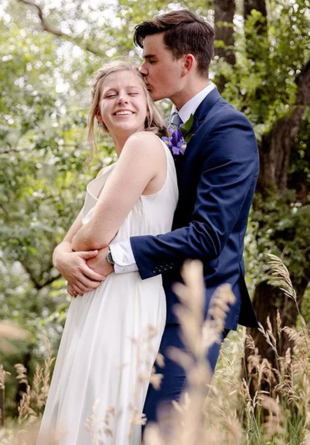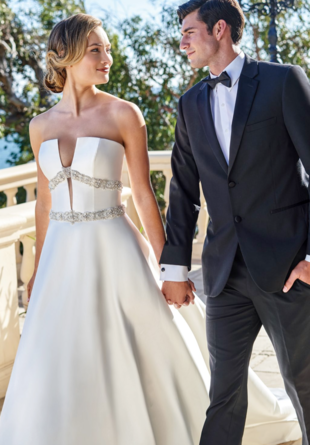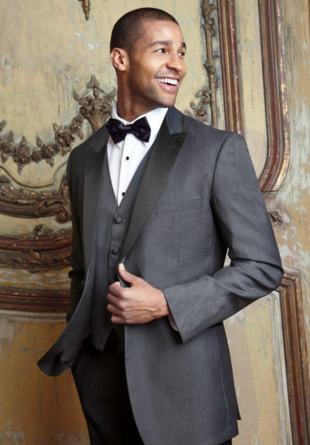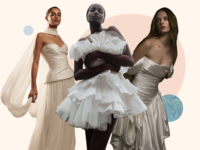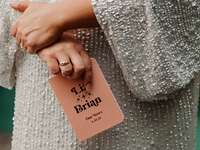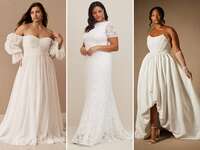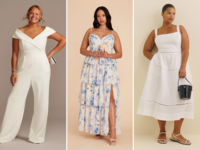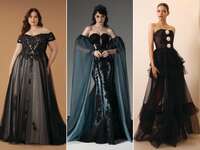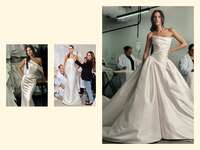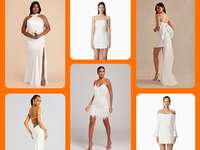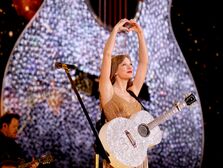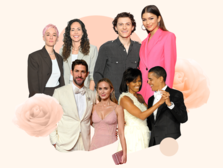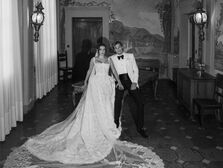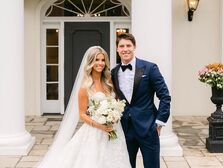8 Parts of a Dress to Know Before Wedding Dress Shopping
Your wedding dress is one outfit you don't want to compromise on. But to secure the dress of your dreams, you'll have to know how to put your vision for your look into words. Fortunately, understanding the various parts of a dress can help you do just that. This wedding dress glossary outlines the main components that are found in most bridal gowns, from the sleeves and bodice all the way down to the hem. We're also explaining some other technical terms that you might encounter while browsing for your dream wedding dress to help you feel in-the-know before the big day. Oh, and no need to take notes. We've even included a handy-dandy infographic that you can screenshot to reference during your wedding dress shopping appointments.
In this article:
Parts of a Dress, At a Glance
Before we break down the full anatomy of a dress, let's go over some of the basics. Here, we have answers to some of the most FAQ about wedding gown parts.
What is the top of a dress called?
The top of a wedding dress is called a bodice. The bodice of a dress covers the torso from the neckline to waistline, and in some cases it may connect to sleeves.
What is the bottom of a dress called?
The bottom hallf of a dress is called a skirt. Wedding dress skirts come in a variety of different shapes and silhoettes. Some are more form-fitting, like sheath and mermaid gowns, while other's are more voluminous, like A-line and ball gowns.
What is the end of a dress called?
The end of a wedding dress is called a hem. Sometimes, the hem of a dress will extend into a train or a dress tail. Trains can range in length from several inches to up to 12 feet.
The Parts of a Wedding Dress From Top to Bottom
You've likely heard some of these terms in casual conversation, but now that you're searching for a gown of your own, it's time to brush up on all of the main parts of a wedding dress (and why each one is important in its own right). Below, we're breaking them down from top to bottom.
According to Ou Ma, Creative Director and founder of the bridal brand, OUMA, it's important to keep an open mind when exploring the various parts of a gown. "No particular style looks 'the best' on you–it's a matter of how they make you feel," she explains. When shopping for a wedding dress, Ma recomends trying on ones that differ in structure. You just might be surprised at the different bridal gown parts you end up liking.
In this section:
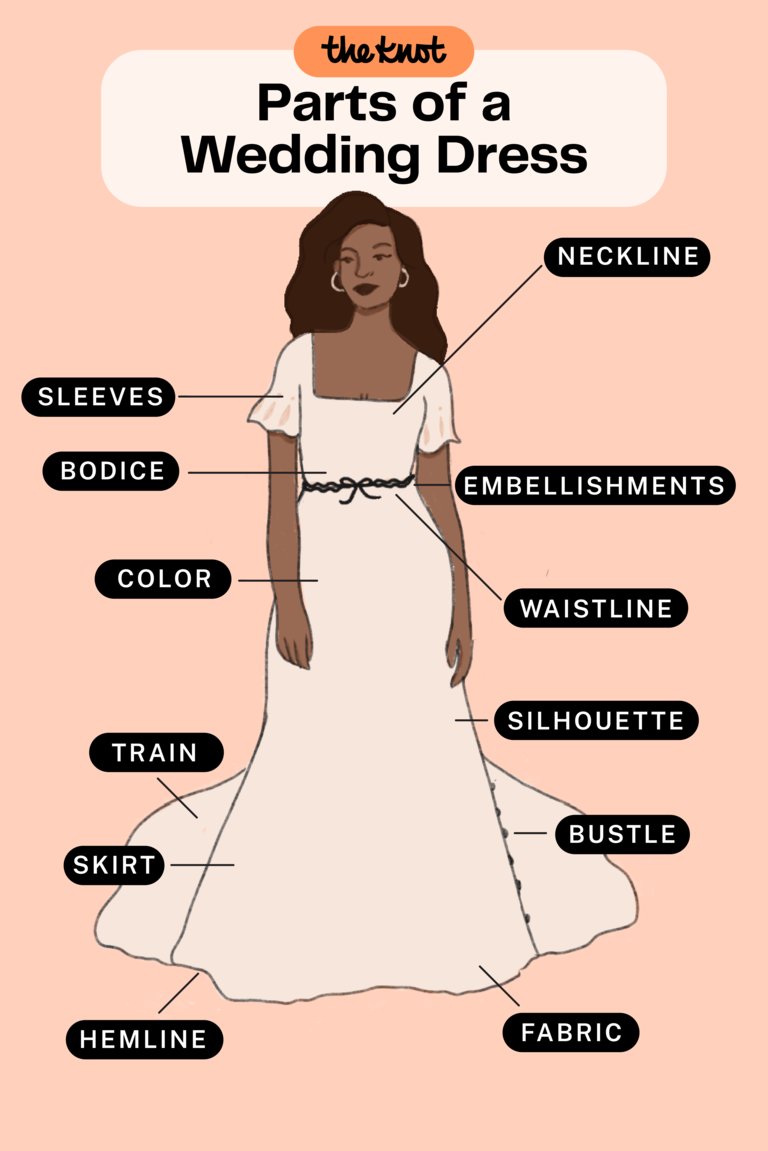
1. Neckline
The wedding dress neckline is exactly what it sounds like: it's the very top of the wedding dress where the openings for your neck and arms are located. When you're wearing the dress, the neckline is one of the first details people will notice, since it frames your face and upper body. Some necklines, such as bateau, jewel, one-shoulder and halter, are designed to sit high on the neck and offer coverage for your chest and collarbone. Other types of necklines, like portrait, sweetheart, V-neck and off-the-shoulder, are defined by revealing more skin (including cleavage, depending on how low you go with the neckline). Choosing the right neckline can add character to a gown, show off a necklace or highlight a physical feature, such as elongating your neck or framing a strong set of shoulders. According to Ma, when it comes to necklines, "different brands can do things differently, so don't get discouraged or rule out a certain style too quickly."
2. Sleeves
Along with providing coverage for your arms, wedding dress sleeves can add interest to the top of your gown. Once closely linked to season, sleeves have become a year-round option for wedding dresses, depending on the look you're ultimately going for. While long-sleeve wedding dresses are definitely more popular during the winter months, they can work just as well in other seasons, especially if you want a formal, regal-inspired look or need to cover your arms and shoulders for religious reasons. In some cases, you can even add sleeves to a wedding dress for a bit more coverage.
On the other end of the spectrum, there's sleeveless and strapless dresses. According to The Knot 2024 Attire and Fashion Study, these are the most popular styls among brides. Sleeveless wedding dresses can have barely-there sleeves, like short puff sleeves or spaghetti straps, while strapless dresses have no sleeves or straps at all. Strapless necklines can be straight across or take on a heart-shaped appearance, which is called a sweetheart neckline.
3. Bodice
The top layer of a wedding dress is called the bodice. This is the section of the dress that extends from the neckline to the waist, covering your bust and stomach. Some bodices are structured to create a specific shape along your midriff—think corsets and bodices with boning—while others are more loosely fitted.
The bodice isn't just a functional part of the dress—it can be decorative too. The flip side of a simple bodice can reveal a sheer lace-up corset back; a high neckline can be offset by a bodice with side cutouts; a strapless bodice can get a sexy upgrade with bustier-style underwire cups.
4. Waistline
From a technical standpoint, the waistline of the wedding dress is a horizontal seam across the midriff that joins the bodice and skirt. Along with the neckline, sleeves and bodice, this part of a wedding dress works to create a specific shape and convey your personal style. There's more than one type of waistline, and each one has a different effect. The waistline can dictate how a dress works on your body type. For example, the V-shape of a Basque waist falls below the belly button, highlighting the hips to enhance your curves. It's the perfect finishing touch to a full ball gown if you want a princess-worthy look.
On the other hand, a natural waist (a waistline that sits right below your ribs) creates a more traditional effect and skims over your lower body. Drop waists, which were highly popular in the 1920s (think flapper dresses), help create the illusion of a longer torso, while empire waists that sit right under the bustline are favored for their slimming properties (and Regencycore influences). Some wedding dress styles don't have a waistline at all. Column, sheath and slip wedding dresses fall straight down from the bodice, loosely skimming your body without a visible waistline.
Ma recommends choosing a waistline that suits your proportions and makes you feel comfortable, especially for extended periods. "Tight or overly restrictive styles may cause discomfort or limit movement," she says. "Remember that your wedding day is not just a portrait session–having amazing keepsake photographs is important, but dancing and moving around freely to create long-lasting memories are also crucial."
5. Skirt
The bottom half of your wedding dress is called the skirt, and just like the other parts of your dress, it can influence the overall look of your ensemble. The shape, size and length of the skirt varies from dress to dress.
Most wedding dress skirts will have more than one layer of fabric, even if the skirt is slim or formfitting. Unlike the casual dresses you might wear in your day-to-day life, your wedding dress will have a lining, which is a layer of nude or white fabric underneath the rest of the skirt. Think of the lining as a built-in slip that prevents the dress from being sheer. If your skirt is decorated with beading, illusion lace or other adornments, the lining also acts as a barrier between the (potentially itchy) embellishments and your skin. Some of the most popular types of convertible wedding dresses feature detatchable skirts, which can be removed to reveal a mini dress underneath.
Along with the lining, your wedding dress may have a crinoline, petticoat or other type of underskirt—these are all used to create voluminous, full skirts, especially for ball gowns and A-line styles. If your wedding dress doesn't have a built-in crinoline or petticoat, it's something your seamstress can add during alterations. Tulle, chiffon and organza are some of the most popular fabrics for wedding dress skirts.
6. Hemline
The hemline refers to the length of the skirt, which can be used to dictate the formality of your wedding. Generally speaking, the longer the dress, the more formal the affair. Most wedding dresses have floor-length hemlines, although tea-length skirts, high-low skirts and short wedding dresses are all great alternatives.
Floor-length hems are considered the most formal type of wedding dresses. Gowns that fall anywhere from mid-calf to ankle are considered semi-formal. And styles that are knee-length or shorter are typically associated with being the most informal, although they're a chic option for an elopement look, a reception dress or simply showing off your legs (and a fab pair of wedding shoes).
7. Train
The end of the wedding dress is called the train—essentially, it's a longer piece of fabric that extends onto the floor from the back of the skirt. More than any other part of a wedding dress, the train has the ability to really transform your look and give you an undoubtedly bridal moment. Dress trains date back to the Middle ages when the length of the train indicated societal rank (longer train = higher rank). Today, longer wedding dress trains, such as chapel and cathedral, are considered the most formal and majestic.
Shorter train lengths, like Watteau and sweep trains, barely graze the floor and are therefore less formal. Detachable trains, which can be any length, are typically fastened to the skirt with buttons or hooks, making them easy to remove during the reception and eliminating the need for a bustle.
8. Bustle
Last but not least, this part of your wedding dress will come in handy if your gown does have a train. The wedding dress bustle is a discreet set of hooks, buttons or ribbons that are sewn onto the back of your skirt, either on top or underneath. Its purpose? To shorten a long train and make it easier for you to walk around without having to pick up your skirt.
On your wedding day, the best time to bustle your wedding dress is in between the ceremony and reception. This way, you'll have the dramatic effect of your train sweeping across the floor as you walk down the aisle—followed by the ease of tucking it away once you're ready to party.
Wedding dresses don't come with built-in bustles, so you'll need to ask your seamstress to add one. And since you won't be able to bustle the train while you're actually wearing the dress, we recommend enlisting a trusty bridesmaid to help you when the time comes. (Just be sure to have them practice ahead of time!)
More Wedding Dress Terminology to Know
Technical wedding dress parts aside, there are a few other bridal terms you should know before heading into your first shopping appointment. Here are some of the most common ones you might come across.
Silhouette
The wedding dress silhouette refers to the overall shape of a gown. It's the most essential element to take into consideration, because a gown's shape is its bedrock—it's what sets the mood for your entire look. A fitted bodice and full ball gown skirt are a winning combo if you've always dreamed of being a fairytale bride. Formfitting silhouettes, like fit-and-flare or mermaid, up the ante on wedding dress sex appeal. Straight silhouettes, such as column and sheath, are go-to options for minimalist brides.
Fabric
Personal style, texture, movement and your wedding season are all important factors when considering different wedding dress fabrics. One dress could look and feel drastically different if you made it using two different fabrics, since each material is designed to produce a distinct effect.
Some fabrics cling to your figure, while others are more structured and hold their shape away from the body. Some are cherished for their crispness and weight, with others being prized for their light-as-air construction.
Silk, lace, crepe, tulle, chiffon and organza are just a few of the most popular wedding dress fabrics you might be familiar with. When you're trying on dresses, your bridal stylist will help you choose contenders with fabric that's suitable for your wedding season, dress code and budget.
Color
It's hard to find a tradition that's more synonymous with marriage than the white dress. And while it's true that colorful wedding dresses have stepped into the spotlight in recent years (we're looking at you, blush), white continues to be the most popular hue for brides.
But not all white wedding dresses are the same. In reality, wedding gowns are available in a range of white, ivory and off-white tones, and the color you ultimately choose depends on your own personal taste. Some wedding dress designers offer the choice between stark white, ivory or other colors when you order your gown. (In case you were curious, The Knot 2024 Attire and Fashion study revealed that the majority of brides this year opted for ivory.)
Stark white is the brightest, most crisp white you can find. Natural white fabric is slightly darker and is typically made from natural fibers, like silk. Ivory is an off-white color with subtle yellow undertones. A champagne white hue has hints of gold and pink, giving it a warmer effect.
The good news: Most white fabrics will look the same on camera and from a distance, so it's not something you need to overthink. But if you're concerned about choosing the right shade of white, ask your bridal stylist if you can view the dress in multiple lighting conditions throughout the shop (natural light from a window, fluorescent bulbs and low lighting, for example).
Embellishments
Think of wedding dress embellishments as a way to take your look to the next level. With the right embellishments, you can add glamour and individuality to nearly any style. Beading, lace appliqués and embroidery are just a few examples of embellishments that bring richness and texture to plain fabric. Small, iridescent sequins or pearl beads can be used to dress up a bodice with shimmer and iridescence. And layers of fringe or crochet trim will give an instant boho flourish to any design.
While we do recommend asking to add embellishments and customizations when you order your wedding dress, your seamstress will also be able to help you. And if you want to add pizzazz without permanently altering your dress, consider a sparkly waist sash or beaded topper.
Additional reporting by Sofia Deeb.
